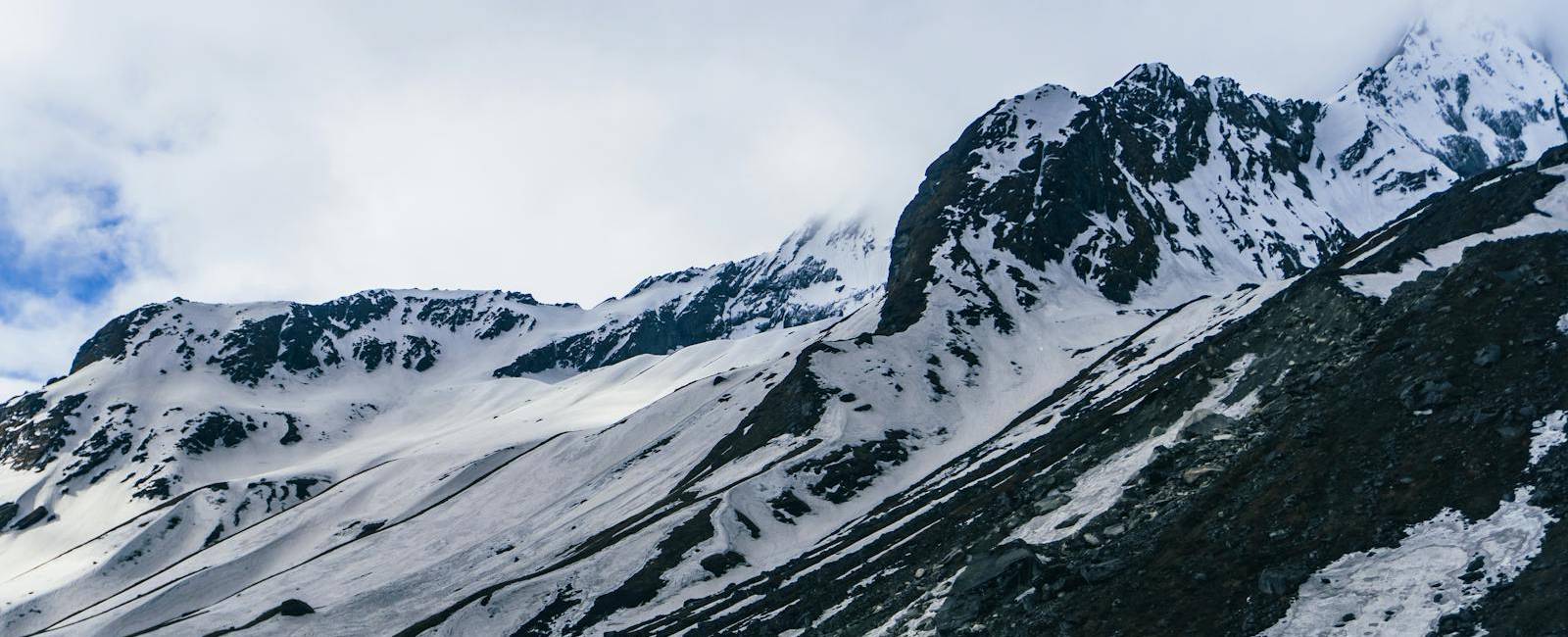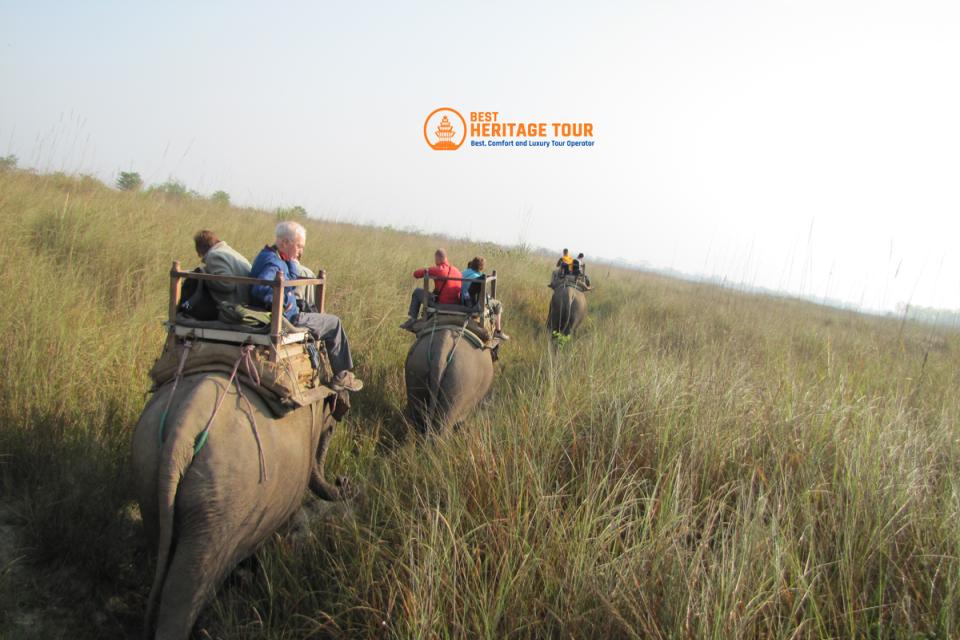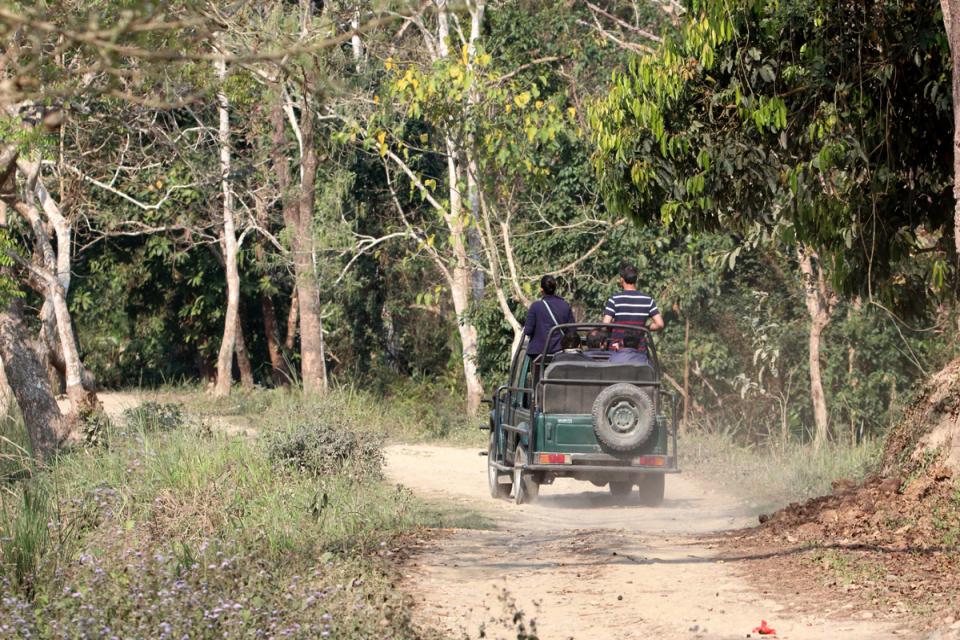Chitwan Jungle Safari is one of the most iconic and immersive wildlife experiences in Nepal. Nestled in the subtropical lowlands of the Terai region, Chitwan National Park is a UNESCO World Heritage Site and home to an incredible range of flora and fauna - most notably the endangered One-Horned Rhinoceros. As we move into the years 2026 and 2027, the Chitwan Jungle Safari continues to evolve, offering a blend of adventure, conservation awareness, and rich cultural experiences.
Whether you’re a wildlife enthusiast, a travel photographer chasing rare shots, or simply a nature-loving traveler, Chitwan provides an authentic escape into the wild. From early morning jeep safaris to tranquil canoe rides and cultural performances by the indigenous Tharu community, the Chitwan Jungle Safari offers more than just animal sightings - it offers a chance to reconnect with nature in its rawest form.
In this blog, we’ll explore everything you need to know about the Chitwan Jungle Safari in 2026/27 - including what makes it unique, when to go, what wildlife to expect, and how to make the most of your experience.
Where is Chitwan National Park?
Chitwan National Park is located in the south-central part of Nepal, in the lowland Terai region, approximately 160 kilometers southwest of Kathmandu. Spanning over 950 square kilometers, it lies primarily within Chitwan District, extending into Nawalparasi, Parsa, and Makwanpur. This lush landscape of dense jungle, open grasslands, wetlands, and oxbow lakes creates the ideal habitat for a wide variety of wildlife species.
The park is easily accessible from major cities like Kathmandu and Pokhara, making it a convenient destination for both domestic and international travelers. Most visitors arrive via a 5-6 hour scenic drive or a short 20-minute flight to Bharatpur Airport, followed by a transfer to nearby lodges or resorts in Sauraha or Meghauli - the two main safari entry points.
Designated as Nepal’s first national park in 1973 and later declared a UNESCO World Heritage Site in 1984, Chitwan has become a model for successful wildlife conservation and sustainable tourism. Its geographical location between the Siwalik Hills and the plains makes it a natural corridor for wildlife and a fascinating ecological transition zone.
What Makes Chitwan Jungle Safari Unique in 2026/27?
As the world continues to embrace eco-conscious travel, the Chitwan Jungle Safari in 2026/27 offers more than just wildlife sightings - it offers a chance to witness conservation in action, experience local culture, and enjoy upgraded, sustainable tourism services.
Improved Conservation Initiatives
By 2026/27, Chitwan National Park is strengthening its reputation as a conservation success story. Enhanced anti-poaching measures, increased local community involvement, and more effective wildlife monitoring technologies are helping protect endangered species like the One-Horned Rhino, Bengal Tiger, and Gharial crocodile.
Sustainable Tourism Practices
Eco-tourism in Chitwan is growing more refined. Lodges and safari operators are adopting greener practices - such as solar energy, plastic-free zones, and ethical wildlife viewing guidelines - to ensure tourism does not disturb the park’s delicate ecosystem.
More Immersive Experiences
Safari packages now go beyond jeep rides. In 2026/27, expect more curated experiences such as guided photography walks, birdwatching expeditions, and cultural programs led by local Tharu communities - making the jungle safari as much about people and stories as it is about wildlife.
Digital Enhancements
With better connectivity and mobile safari apps, visitors can now access real-time wildlife tracking updates, species guides, and even AR-powered interpretations of the park’s flora and fauna - adding an educational layer to the adventure.
The Chitwan Jungle Safari is not just keeping up with modern travel, it’s redefining it by combining conservation, education, and authentic experience in the heart of Nepal’s wild frontier.
Top Wildlife to Spot: One-Horned Rhino & More
One of the main reasons travelers visit Chitwan National Park is its extraordinary biodiversity. The park is home to over 700 species of wildlife and birds, offering nature lovers and photographers a rare chance to witness some of the world’s most endangered and majestic creatures up close.
One-Horned Rhinoceros
The star of Chitwan, the Greater One-Horned Rhinoceros, is a conservation success story. Once critically endangered, the population has rebounded significantly thanks to strong protection efforts. Chitwan is now one of the few places on Earth where you can reliably spot this ancient-looking species roaming freely in the wild.
Bengal Tiger
Although elusive, Chitwan’s dense forests are home to the endangered Bengal Tiger. Visitors occasionally catch glimpses of this majestic predator during early morning safaris, especially in less-traveled zones of the park.
Asian Elephant
While wild elephants occasionally move through the park, visitors can also see domesticated Asian Elephants involved in patrolling and conservation efforts. Elephant breeding centers in Chitwan offer a deeper understanding of their role in local ecology and history.
Gharial & Mugger Crocodile
The park's river systems, especially the Rapti and Narayani, are inhabited by Gharials - a rare fish-eating crocodile and the more common Mugger Crocodile. Canoe rides offer safe and peaceful ways to observe them up close.
Over 540 Bird Species
Chitwan is a birdwatcher’s paradise. From Kingfishers, Hornbills, and Eagles to migratory waterfowl, the park is teeming with color and sound. Birdwatching walks, especially in the early mornings, are a must for enthusiasts.
Other Notables
Look out for sloth bears, leopards, wild boars, Rhesus macaques, langurs, and even pangolins if you're lucky. The sheer diversity makes every safari unique.
Whether you’re tracking the mighty rhino or waiting silently for a glimpse of a tiger, Chitwan delivers a thrilling and unpredictable wildlife experience every time.
Types of Jungle Safari Experiences
Chitwan Jungle Safari isn’t a one-size-fits-all adventure. In fact, the park offers a variety of safari options tailored to different preferences, comfort levels, and interests. Whether you're seeking thrill, tranquility, or photographic opportunities, there’s something for everyone.
Jeep Safari
The most popular and efficient way to explore deeper regions of the park, Jeep Safaris are ideal for spotting larger animals like the One-Horned Rhino, wild elephants, and (if you’re lucky) Bengal tigers. These guided tours usually take place in the early morning or late afternoon when wildlife activity is highest. Comfortable, open-roof jeeps allow for excellent visibility and photography.
Elephant Safari (Ethical options only)
Once the traditional method of safari, elephant rides have become more controversial in recent years. In 2026/27, several ethical operators now offer elephant walk-along safaris instead, where guests accompany the mahout and elephant on foot - observing from a respectful distance. These programs prioritize the welfare of the animals while still providing close wildlife encounters.
Canoe Ride on the Rapti River
For a quieter, more intimate jungle experience, canoe rides offer peaceful wildlife viewing along the Rapti or Narayani Rivers. As you drift silently past the banks, you may spot gharial crocodiles, mugger crocodiles, otters, and a wide variety of birds. It’s a calm, meditative contrast to the excitement of jeep safaris.
Jungle Walk
Guided jungle walks let you experience the forest on foot, accompanied by licensed naturalists and often a trained security guard. These walks offer a more immersive way to learn about the ecosystem, plants, animal tracks, and subtle signs of wildlife presence. They're best suited for adventurous travelers seeking a deeper connection with nature.
Photography-Focused Tours
For photographers, specialized tours offer slow-paced safaris with guides trained to help spot the right moments and positions for the perfect shot. These are especially popular during peak wildlife activity months and with birdwatchers.
No matter which option you choose, each safari experience in Chitwan brings a new perspective and a new set of memories.
Best Time to Visit Chitwan for Jungle Safari
Chitwan National Park is open year-round, but the timing of your visit can significantly shape your wildlife experience. Climate, animal behavior, and visibility vary across the seasons, so knowing the best time to go will help you make the most of your jungle adventure.
October to March (Peak Season - Best Overall Experience)
This is considered the ideal time for jungle safaris. The weather is dry and pleasant, with daytime temperatures ranging between 20-25°C (68-77°F), making it comfortable for jeep rides and jungle walks. Wildlife is more visible due to shorter grasses, and birdwatching is at its peak with the arrival of migratory species.
Perfect for: First-time visitors, photographers, and anyone seeking high animal activity and clearer views.
April to Early June (Hot but Active)
This pre-monsoon period sees rising temperatures (up to 35°C / 95°F), but it’s a good time for wildlife spotting, especially around waterholes where animals gather to cool off. It's also quieter in terms of tourist numbers, which means more peaceful safari experiences.
Perfect for: Hardcore wildlife lovers and photographers looking for fewer crowds.
Mid-June to September (Monsoon - Off Season)
During the monsoon season, Chitwan becomes lush and green, but heavy rains can disrupt travel and make safaris difficult. Jeep safaris are often limited or canceled due to muddy trails, and leeches are common on jungle walks.
Perfect for: Travelers seeking a verdant, peaceful landscape and who don’t mind a little rain.
Bonus: Birdwatching Season (November to February)
This period overlaps with the dry season and is the best time for birdwatchers, with hundreds of migratory birds joining resident species around rivers and wetlands.
Each season offers its own charm, but if you're planning a once-in-a-lifetime jungle safari, aim for the dry months between October and March for the most rewarding and accessible experience.
Safari Tips for First-Time Visitors & Photographers
Embarking on a Chitwan Jungle Safari for the first time or aiming to capture breathtaking wildlife photos - can be both thrilling and a bit daunting. Here are some practical tips to help you make the most of your safari experience:
Dress Appropriately
Wear neutral-colored clothing like khaki, olive, or beige to blend in with the natural surroundings and avoid startling wildlife. Long sleeves and pants protect against insect bites and sun exposure. Don’t forget a wide-brimmed hat and sturdy walking shoes.
Camera Gear Essentials
For photographers, a telephoto lens (200mm or more) is essential to capture distant animals without disturbing them. Carry extra batteries, memory cards, and lens cleaning kits. A lightweight tripod or monopod can stabilize your shots during jeep rides.
Timing is Key
Wildlife is most active during early mornings and late afternoons, so plan your safari trips during these windows for the best sightings and ideal natural lighting for photography.
Protect Against Insects
Carry insect repellent, especially during warmer months and near water bodies, to protect yourself from mosquitoes and leeches. Consider wearing socks with your shoes for added protection during jungle walks.
Respect the Wildlife
Maintain silence and avoid sudden movements. Never attempt to feed or get too close to wild animals. Always follow your guide’s instructions and stay inside your vehicle unless told otherwise.
Stay Hydrated and Energized
Carry sufficient water and light snacks. Safaris can be long and physically demanding, so staying hydrated is vital.
Choose Licensed Guides
Opt for experienced, licensed guides who know animal behaviors and the best spots for sightings. Their knowledge will enhance your experience and safety.
Pack Light
Bring only essentials in a comfortable daypack. Avoid strong perfumes or scented lotions, which can disturb wildlife.
Capture the Moment, Respect the Moment
While photography is exciting, don’t forget to enjoy the experience firsthand. Sometimes, the best memories are the ones stored in your mind rather than the lens.
Responsible Wildlife Tourism & Conservation Efforts
Chitwan National Park is not just a destination for adventure - it’s a crucial sanctuary for some of the planet’s most endangered species. As travelers, it’s essential to engage in responsible tourism that supports conservation efforts and respects local communities.
Conservation Success Story
Chitwan is globally recognized for its successful protection of the One-Horned Rhinoceros, whose numbers have grown dramatically due to anti-poaching patrols and habitat management. The park also contributes to the conservation of Bengal tigers, elephants, gharials, and numerous bird species.
Community Involvement
Local Tharu communities are key partners in conservation and tourism. Their traditional knowledge and cultural heritage enrich visitor experiences while providing economic benefits that encourage wildlife protection. Responsible tours often include cultural visits to Tharu villages, helping preserve their traditions.
Ethical Animal Encounters
Choose safari operators who prioritize animal welfare - avoid elephant rides that stress the animals and opt for walking safaris or observation from vehicles. Support lodges and tours that practice sustainable waste management, water conservation, and reduce plastic use.
Minimizing Your Impact
Respect park regulations, stick to designated trails, and never litter. Using reusable water bottles, minimizing noise, and avoiding flash photography helps reduce disturbance to wildlife.
Supporting Conservation Organizations
Some tours and lodges contribute a portion of their proceeds to local conservation initiatives. Ask about these efforts and consider donating or volunteering if you have the time.
By choosing to travel responsibly, visitors to Chitwan play an active role in preserving this extraordinary ecosystem for future generations.
Conclusion
Chitwan Jungle Safari in 2026/27 offers a rare opportunity to immerse yourself in Nepal’s rich natural heritage while supporting vital conservation efforts. From the majestic One-Horned Rhinoceros and elusive Bengal Tiger to vibrant birdlife and the welcoming Tharu culture, every moment in Chitwan is an unforgettable adventure.
To make the most of your experience, choose knowledgeable guides, practice responsible tourism, and plan your visit during the optimal season. Whether you’re a photographer chasing the perfect shot or a traveler seeking a deep connection with nature, Chitwan National Park promises memories that will last a lifetime.
For a seamless, expertly curated Chitwan Jungle Safari, connect with Best Heritage Tour. Their experienced team offers personalized packages, comfortable accommodations, and guided safaris designed to maximize your wildlife encounters while prioritizing sustainability.
Contact Best Heritage Tour today:
Visit: www.bestheritagetour.com
Phone/ Whatsapp: +977-9851149197
Email: info@bestheritagetour.com / bestheritagetour@gmail.com
Office: Thamel Marg, Kathmandu, Nepal
Embark on your wild adventure with confidence and care - discover the wonders of Chitwan like never before.
Author: Best Heritage Tour
Date: 31st July, 2025



